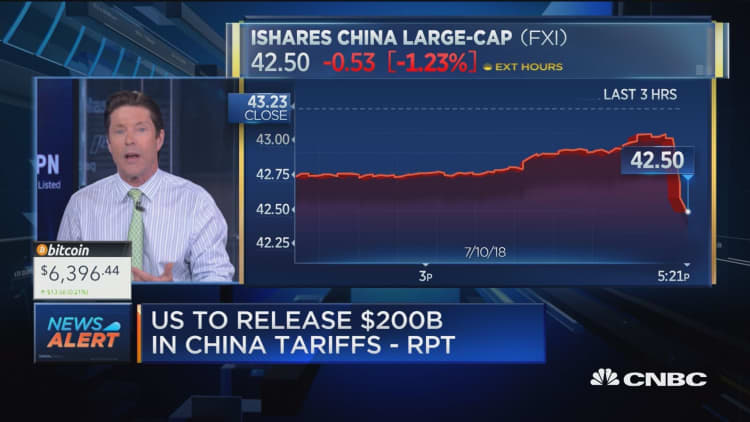The Trump administration on Tuesday released a list of 10 percent tariffs on $200 billion in Chinese goods, making good on the president’s recent threats to escalate a broadening trade war with Beijing.
“The $200 billion figure we're looking at is roughly equal to their exports to us,” a senior administration official said.
The tariffs will not go into effect immediately but will undergo a two-month review process, with hearings Aug. 20-23.
Some of the products on the list facing tariffs are from Made in China 2025 sectors, the official said. Made in China 2025 is a strategic plan to make China a leader in key global industries, including technology.
When compiling the list of goods, the U.S. Trade Representative took into account what could cause disruptions to China's economy.
The official said the administration has been extremely clear to China in terms of its concerns about trade, but China has been unresponsive.

"For over a year, the Trump Administration has patiently urged China to stop its unfair practices, open its market, and engage in true market competition," U.S. Trade Representative Robert Lighthizer said in a statement.
"Rather than address our legitimate concerns, China has begun to retaliate against U.S. products," he added.
The list of new sanctions follows warnings by Trump that he may implement tariffs on at least $500 billion in Chinese goods should Beijing retaliate against the $34 billion in U.S. tariffs that kicked in Friday.
Despite the president's threats, China implemented retaliatory tariffs on the U.S. shortly after the $34 billion went into effect last week.
Trump has repeatedly threatened to escalate the trade conflict with China. The dispute with Beijing has roiled financial markets worldwide, including stocks, currencies and the global trade of commodities from soybeans to coal.
U.S. Trade Representative Robert Lighthizer released the following statement regarding the new tariffs:


